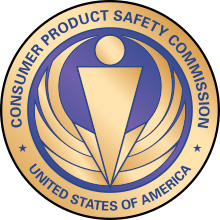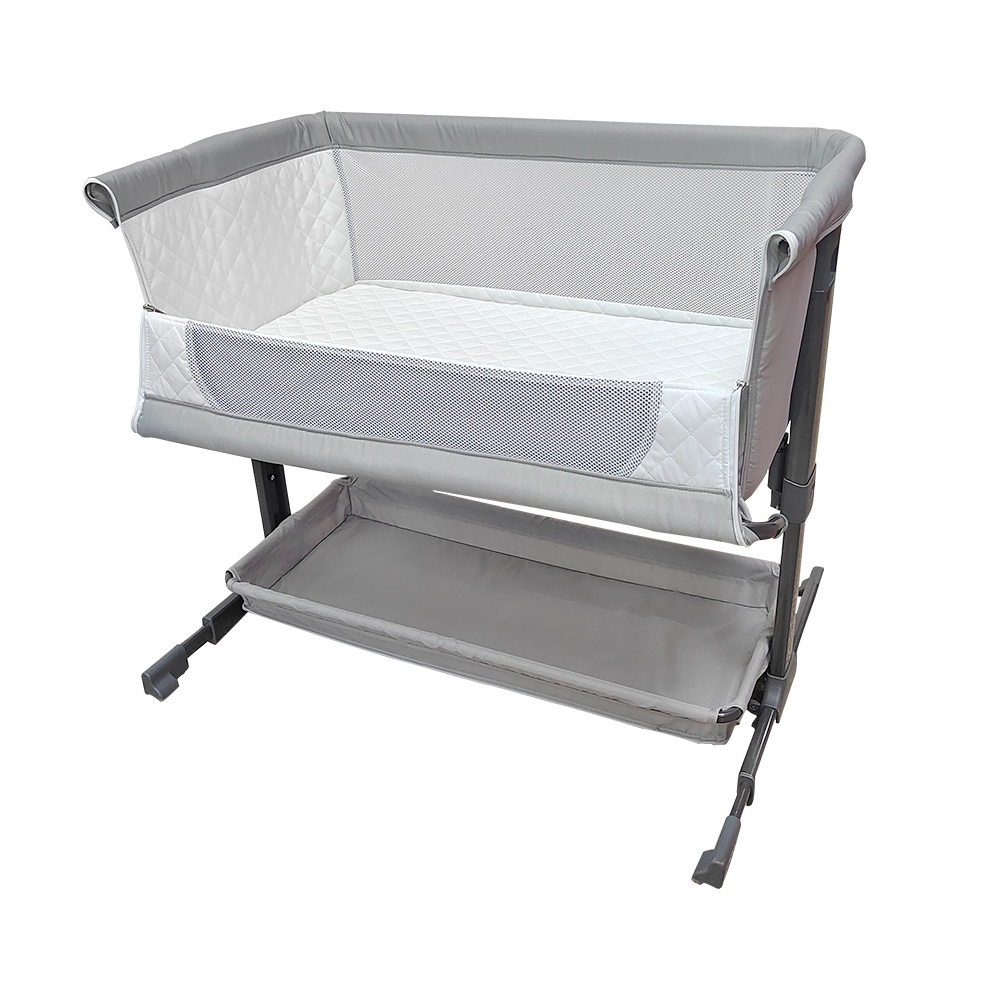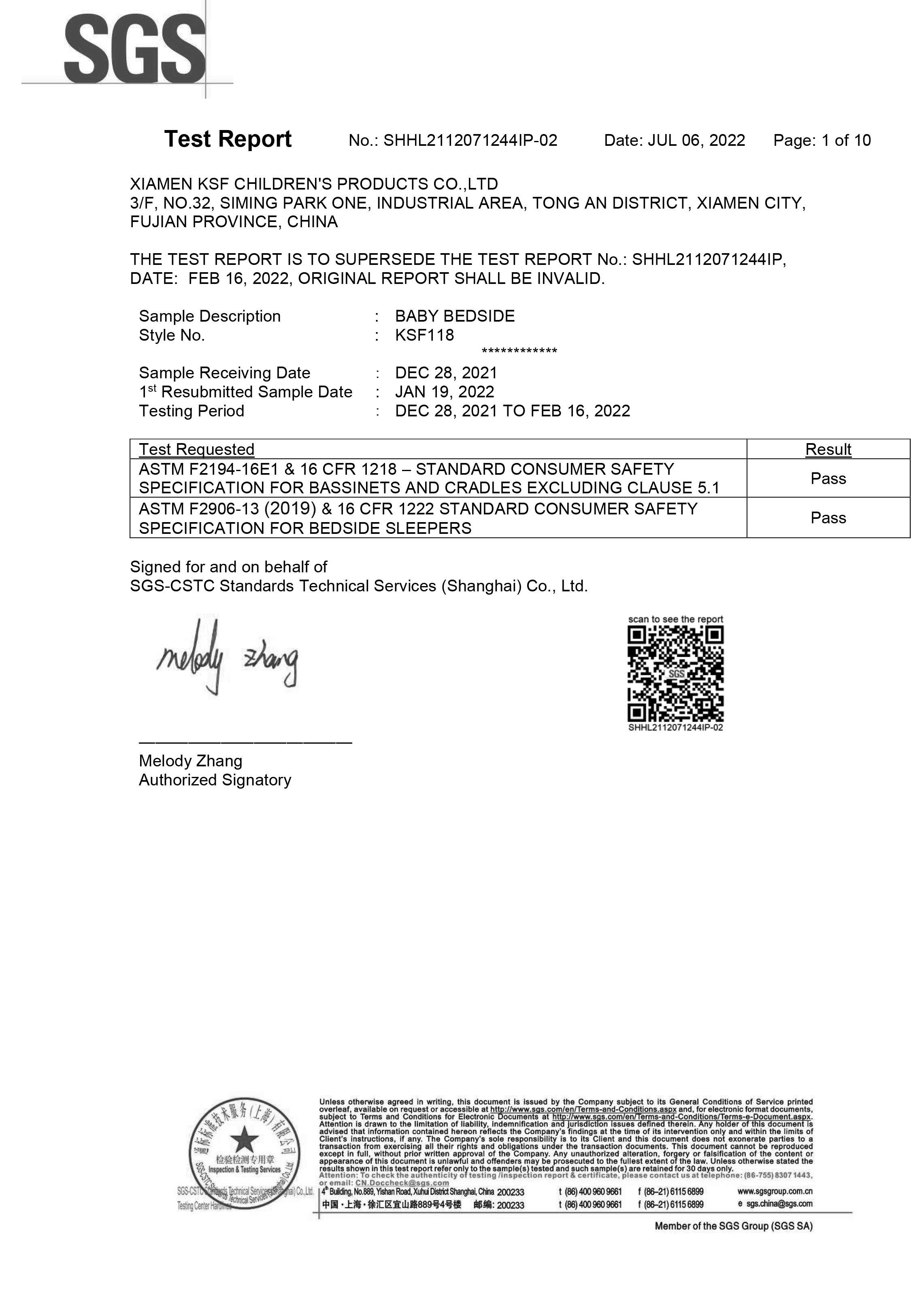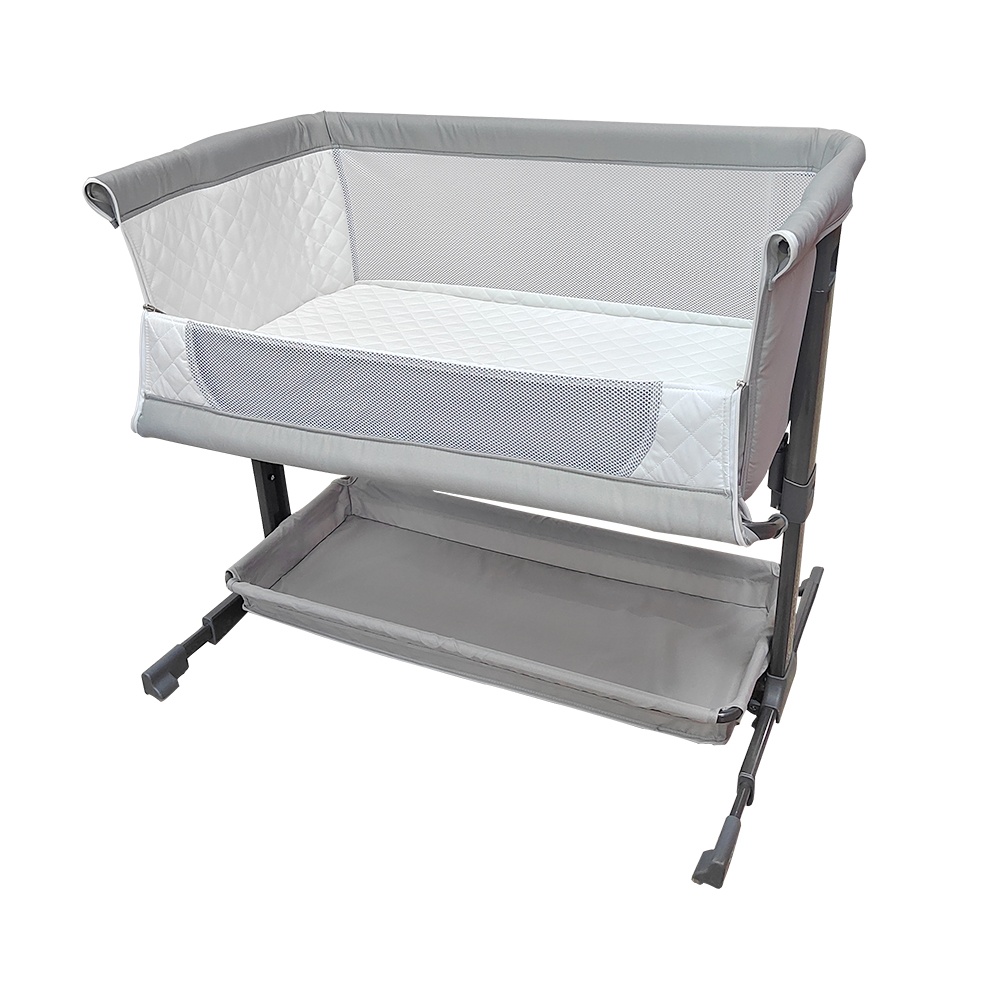Federal law requires bedside cribs to comply with bedside crib standards and other requirements, including those in the U.S. Consumer Product Safety Improvement Act of 2008.
After bedside cribs have been tested for compliance by a third-party laboratory accredited by the CPSC, manufacturers and importers of bedside cribs must certify that their products meet the standards and other requirements with the Children’s Product Certificate.

Below and the www.cpsc.gov/BusinessEducation website discusses these requirements.
What is a bedside crib?
A bedside crib is a fixed frame assembly that attaches to the side of an adult’s bed to provide a sleeping environment for infants.
A fixed frame combination for a bedside crib, which may be combined with a fabric or mesh, \or both, for the side, end, or bottom of the bedside crib.

What is the purpose of the bedside crib standard?
The standard is intended to minimize the risk of death or injury associated with the use of bedside cribs, including hazards related to entrapment and suffocation, related to structural integrity and product assembly, and lack of consumer education on the proper use of this product Danger.
Where can I find standards for bedside cribs?
The standard is published in 16 CFR Part 1222 of the Code of Federal Regulations. This standard refers to and incorporates the American Society for Testing and Materials standard ASTM F2906-13, with some modifications. ASTM F2906-13, Standard Consumer Safety Specification for Bedside Cribs, contains specific requirements and instructions for testing cribs and can be purchased from ASTM International.
In addition to complying with the bedside crib standard, products must meet the specific requirements and testing outlined in ASTM F2194, Standard Consumer Safety Specification for Infant Carriers and Bassinets. ASTM F2194 is also available from ASTM International.

What are the requirements for a bedside crib?
The American Society for Testing and Materials (ASTM) standard contains performance requirements for bedside cribs, including specific performance, testing and labeling requirements. The main provisions of the American Society for Testing and Materials (ASTM) bedside cribs include the following;
Meets ASTM F2194, Standard Consumer Safety Regulations for Infant Carriers and Bassinets, ensuring the product meets basic safety requirements for sleeping environments (choking, stability, small parts, pinching, shearing, accidental folding, load, side height and sharp side.)
Multi-Mode Product—Prevents safety hazards when used in other product modes and configurations (playpen, infant carrier, changing table, or hand held infant basket.)
Lowest edge height on the lowered side—ensures the user stays securely in it.
Product Disintegration – Make sure the attachment keeps the baby securely in the bed and prevents entrapment hazards.
Fabric side closes opening – designed to prevent entrapment and choking hazards.
Bedside Crib Attachment (Sleep Plane Collapsed/Slanted) — Prevents suffocation and entrapment caused by incorrectly assembled bedside crib attachments that are missing major structural elements.
WARNING—Intended to alert caregivers of possible infant fall, entrapment, and suffocation hazards when using a bedside crib.
When testing ASTM F2194, 16 C.F.R. part 1222 also contains some amendments to ASTM F2906-13 to comply with amendments to the infant carrier standard (16 C.F.R. part 1218). These amendments include the following:
Modification of angle limit in segmented mattress plane detection. Federal standards allow for a 10-degree inclination.
Modifications to the stability testing procedure to make it more stringent and applicable to this product.
A new regulation and testing procedure to prevent stability risks for products with removable bassinets.
What are the other requirements for bedside cribs under the US Consumer Product Safety Improvement Act of 2008?
Bedside cribs are regulated by surface coating, lead and phthalate content, testing and certification, registration card, and tracking label requirements. These requirements are discussed below and at www.cpsc.gov/BusinessEducation:
Indicates coating limits: Paint used in bedside cribs must not contain more than 90ppm (0.009%) lead.
Lead content limit: The total lead content of any accessible component parts of a bedside crib must not exceed 100ppm (0.01%).
Phthalate content limits: Plasticizer parts of bedside cribs (and parts made of other materials that may contain phthalates) must not contain more than 0.1% of the following phthalates : Di(2-ethylhexyl) phthalate (DEHP), di-n-butyl phthalate (DBP), or butylbenzyl phthalate (BBP). In addition, plasticized parts of bedside cribs (and parts made of other materials that may contain phthalates) must also not contain more than 0.1% of diisononyl phthalate (DINP), phthalate Diisodecyl dicarboxylate (DIDP), or di-n-octyl phthalate, as long as the temporary statutory ban on these three phthalates remains in effect.
Testing and Certification: As with all products designed and intended for primary use by children 12 years of age or younger, bedside cribs must be tested by a CPSC-accepted third-party laboratory to ensure compliance with the bedside crib standard and all other applicable children’s product safety requirements. Based on this testing, the domestic manufacturer (or importer) of a bedside crib must issue a Children’s Product Certificate specifying each applicable requirement and certifying that the product complies with those requirements.
Product and Outer Packaging Labeling Requirements: Durable infant or toddler products, such as bedside cribs, must be permanently marked with specific labeling information, including tracking labels, on the product and packaging. In addition, durable infant and toddler products are required to have additional product identification and a product registration card attached to the product. This chart summarizes the specific labeling and registration requirements that durable infant and toddler products must meet.
Where can I get more information?
For more information on bedside crib regulations, please contact the CPSC:
Office of Compliance (for specific enforcement questions): Email: [email protected]; Phone: (301) 504-7520.
Small Business Ombudsman (general assistance with understanding and complying with CPSC regulations): Email: Please use our contact form, it’s the best way to get a quick response. Phone: (888) 531-9070.
To obtain texts of ASTM F2906-13 and ASTM F2194, contact ASTM International at: www.astm.org or call: (610) 832-9585.
Related Products




